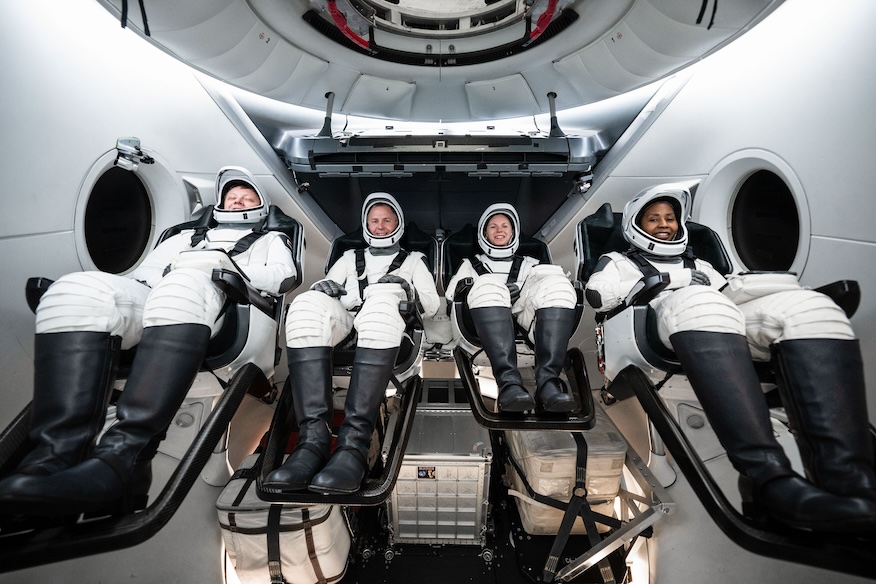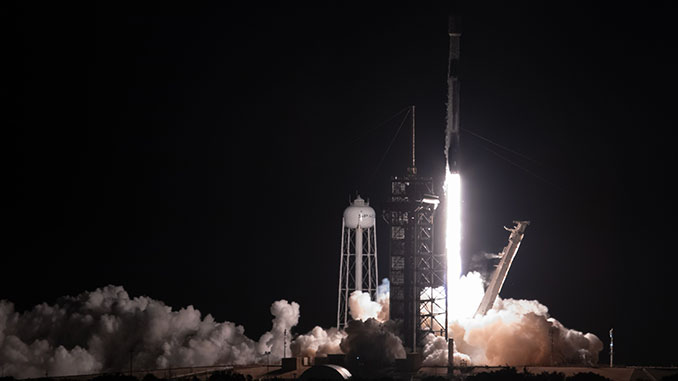SpaceX’s two-week launch hiatus ended after midnight Saturday with the Starlink 10-9 mission returning the Falcon 9 to flight after an upper stage accident on July 11 grounded the workhorse rocket.
The Falcon 9 rocket lifted off from Launch Complex 39A at NASA’s Kennedy Space Center at 1:45 a.m. EDT (0545 UTC). The mission marked Starlink’s 50th special launch in 2024. Successful payload deployment was confirmed just over an hour after launch.
The Federal Aviation Administration, the agency that oversees commercial space activities in the US, has given SpaceX permission to resume launches of its Falcon 9 rocket before the official investigation into the incident is complete.
The FAA has signed off on SpaceX’s request for a public safety ruling, one of two routes a launch vehicle that suffers an accident during a mission can use to return to launching its rockets.
“After a comprehensive review, the FAA has determined that there are no public safety issues related to the anomaly that occurred during the launch of SpaceX Starlink Group 9-3 on July 11,” the FAA said in a statement Thursday. “This public safety decision means the Falcon 9 vehicle can return to flight while the overall investigation remains open, provided all other license requirements are met.”
SpaceX’s Falcon 9 rocket, the most commonly used space launch vehicle, encountered a liquid oxygen leak in its upper stage during the Starlink 9-3 mission, which launched from Vandenberg Space Force Base in California on July 11. During its initial burn, viewers of the launch broadcast could see copious amounts of ice build up around the rocket engine.
“The cause of the leak was identified as a crack in a sense line for a pressure sensor attached to the vehicle’s oxygen system,” SpaceX wrote in a blog post Thursday. “This line broke due to fatigue caused by high engine vibration loads and slack in the clamp that normally restrains the line.
“Despite the leak, the second stage engine continued to operate during its first burn and completed engine shutdown where it entered the coast phase of the mission in the planned elliptical parking orbit.”
During a briefing Friday at NASA’s Johnson Space Center about the upcoming Crew-9 astronaut launch, Sarah Walker, director of Dragon Mission Management for SpaceX, said the FAA has given them permission to return to flight. She added that NASA was involved in the entire process.
“In all the data briefings and data mining that we’ve done with the FAA, NASA has officially had a seat at the table to participate in all of this,” Walker said. “We had a question and answer period where we exchanged more data and [the FAA] yesterday gave us the final determination that they agree with our conclusions and we are ready to return to flight.
She said freezing around the engine section caused by the liquid oxygen leak caused the Merlin Vacuum engine to perform a “hard start” due to a slow supply of ignition fluid to the chamber.
“It damaged the engine hardware and caused the upper stage to lose controllability,” Walker said.
Steve Stich, NASA’s commercial crew program manager, said they watched video of that difficult launch with SpaceX, and it was critical to their investigation of the accident.
SpaceX said in its Thursday blog post that neither the top nor the Starlink satellites pose a danger to the public. They also highlighted that the first stage booster, tail number B1063, operated without issue, landing the drone safely, “Of course I still love you,” just over eight minutes after liftoff.
The solution involves removing the problematic sensor that was left in this configuration from a previous customer mission. Stitch said it was a teachable moment of “the attention to detail that is required in spaceflight.”
“Small changes matter. And we looked at the change and we didn’t see any problem on NASA’s part,” Stich said. “So SpaceX has done a great job of going back to look at that area and all the other areas of the vehicle that could have the same problem when you’ve done a qualification that’s a little bit similar to what you had before, but perhaps without having quite the thorough testing that you should have.
“So I think that was a great lesson learned for all of us.”
To prevent a similar problem in the future, the problematic sensor, which Walker described as redundant with other engine sensors, SpaceX decided to remove. It is testing the update at its facilities in McGregor, Texas.

The Falcon 9 upper stage, which will support the Crew-9 mission, is soon undergoing testing there.
“It will undergo a second stage of hot fire around the 30th of July, and that’s really to check some of the new modifications that this vehicle will have as a result of the anomaly,” Stich said.

Back to launch
The FAA’s determination paves the way for the company to resume launches of its workhorse rocket. Early last weekend, SpaceX deployed multiple sea assets that will support launch operations. Both of its Florida-based drones were deployed alongside recovery ships to collect the payload fairings.
Two more launches may follow the return mission, with the Starlink 10-4 mission lined up for Space Launch Complex 40 (SLC-40), as well as the Starlink 9-4 mission from Vandenberg.
Resuming launches is critical not only for SpaceX’s Starlink constellation, but also for customers like NASA and the Polaris program. NASA waits to launch a Northrop Grumman Cygnus spacecraft on the NG-21 cargo resupply mission to the International Space Station, followed by the flight of Crew-9 astronauts to the orbital outpost.
Jared Isaacman and three other private astronauts are also awaiting their turn to fly aboard Crew Dragon Resilience for the roughly five-day Polaris Dawn mission. This will be highlighted by the first commercial spacewalk in history.
On Friday, NASA announced that the mission should launch from LC-39A no earlier than Aug. 18, with a window of opportunity that extends to early September. Stich said the timing is driven by the time it takes to convert that pod from a Falcon 9 to a Falcon Heavy configuration and allow the Europa Clipper to launch on time in October.
SpaceX has multiple marquee missions lined up for the latter half of 2024, including the launch of the CRS-31 Cargo Dragon mission to the ISS around September.



